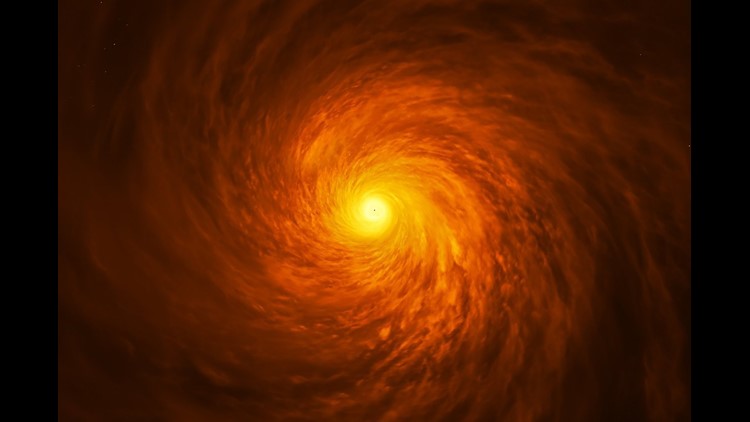There’s something unusual happening at the center of the spiral galaxy NGC 3147, and the Hubble Space Telescope caught a good look.
The galaxy, which is 130 million light-years away, contains a supermassive black hole at its heart, as expected. What wasn’t expected is the thin disc of material around the black hole.
The black hole has a mass 250 million times that of our sun. A study of the black hole and its disc was published Thursday in the Monthly Notices of the Royal Astronomical Society Letters.
The galaxy is active, but it’s a low-luminosity one. This means the black hole at the center should be starving because there isn’t enough material in the galaxy to feed it.
Discs are typically found in extremely active galaxies. It’s a test of Albert Einstein’s theories of relativity, general and special. While general relativity regards gravity as the curvature of space, special explains the relationship between time and space.
And it makes for a great observation opportunity. The disc is deep within the black hole’s gravitational field, which has altered light in a way that astronomers can actually see what’s happening close to the black hole.
“We’ve never seen the effects of both general and special relativity in visible light with this much clarity,” said Marco Chiaberge, senior European Space Agency astronomer at the Space Telescope Science Institute and Johns Hopkins University.
Hubble was able to measure the material in the disc, and astronomers determined that it’s spinning around the black hole at more than 10% the speed of light.
The velocity causes the gas to appear brighter as it’s moving in the direction of Earth and dimmer as it moves away, which is called relativistic beaming.
Because the gas disc is so deeply embedded in the black hole, the light can’t escape, so it looks stretched.
Hubble’s Imaging Spectrograph instrument was able to take the light and separate it into wavelengths. Those wavelengths help indicate temperature, speed and other information. The instrument was key to looking into the low-luminosity area around the black hole.
At first, the galaxy was selected as a model of lower-luminosity active galaxies with starving black holes, which suggests that discs form only when there is enough gas trapped by a black hole. It was believed that if this happened, a large amount of light would be emitted, which is called a quasar.
“This is an intriguing peek at a disc very close to a black hole, so close that the velocities and the intensity of the gravitational pull are affecting how we see the photons of light,” said Stefano Bianchi, associate professor in the Department of Math and Physics at Università degli Studi Roma Tre in Italy. “The type of disc we see is a scaled-down quasar that we did not expect to exist,” Bianchi explained. “It’s the same type of disc we see in objects that are 1,000 or even 100,000 times more luminous. The predictions of current models for very faint active galaxies clearly failed.”



